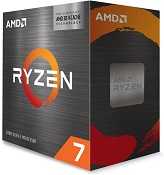What Is an APU?
Accelerated Processing Unit (APU) refers to AMD CPUs with built-in graphics. These CPUs first made it possible to play games at a suitable frame rate and resolution. AMD first introduced APU’s back in 2011 as Llano. Currently the Rembrandt series has taken control from Cezanne (Rembrandt predecessor) as AMD’s primary APU’s and are marketed as the Ryzen 6000 series. The Ryzen series feature CPU cores that were built using AMD’s Zen 3+ architecture and allow smooth gaming at a decent refresh rate at FHD resolution.The upcoming APU is the Raphael and is expected to be marketed as the Ryzen 7000 series and will be available with 16 cores and 32 threads and support for DDR5 RAM and AMD promises a 125% increase in memory bandwidth per core.
Pros and Cons
Pros
- Cost-effective: APUs are generally cheaper than buying a separate CPU and GPU, making them a cost-effective option for those on a budget.
- Space-saving: APUs are smaller in size and consume less power, which can be a benefit for small form factor builds.
- Integrated graphics: The APU’s integrated graphics offer a better performance than traditional integrated graphics, providing a good gaming experience for casual gamers and those who do not need high-end graphics performance.
- Multitasking: The APU’s CPU and GPU work together to deliver better performance, which can be beneficial for multitasking.
Cons
- Lower performance: APUs generally offer lower CPU and GPU performance compared to dedicated CPUs and GPUs, which can be a drawback for power users and gamers who demand high performance.
- Limited upgrade options: Since the CPU and GPU are integrated into one chip, upgrading one component means replacing the entire APU.
- Heat dissipation: APUs can generate more heat than traditional CPUs, which may require a larger cooler or additional cooling solutions.
- Less overclocking potential: APUs have less overclocking potential compared to separate CPUs and GPUs due to their integrated design.
Can an APU replace a low profile GPU?
Yes, APUs can replace low profile graphics cards in some cases. APUs are designed to provide integrated graphics, which are capable of handling basic graphics tasks such as video playback and light gaming. APUs typically offer better graphics performance than traditional integrated graphics found in CPUs.
However, if you are looking for more powerful graphics performance, a dedicated low profile graphics card may be a better option. Low profile graphics cards are specifically designed for smaller form factor PCs and can provide better graphics performance than APUs.
The decision to use an APU or a low profile graphics card depends on your specific needs and the intended use of your PC. If you are using your PC for basic tasks like web browsing and productivity applications, an APU may be sufficient.
However, if you plan to use your PC for gaming or other graphics-intensive applications, a low profile graphics card may be a better choice.
Final words
Overall, AMD’s APU can be a good option for those on a budget or looking to build a small form factor PC. However, for high-performance tasks such as gaming, content creation, or heavy multitasking, a dedicated CPU and GPU would offer better performance.If you are in the market looking for an APU, then the following link can take you to AMD’s website, where you can browse through all of AMD’s APU and find the one that suits you best.

